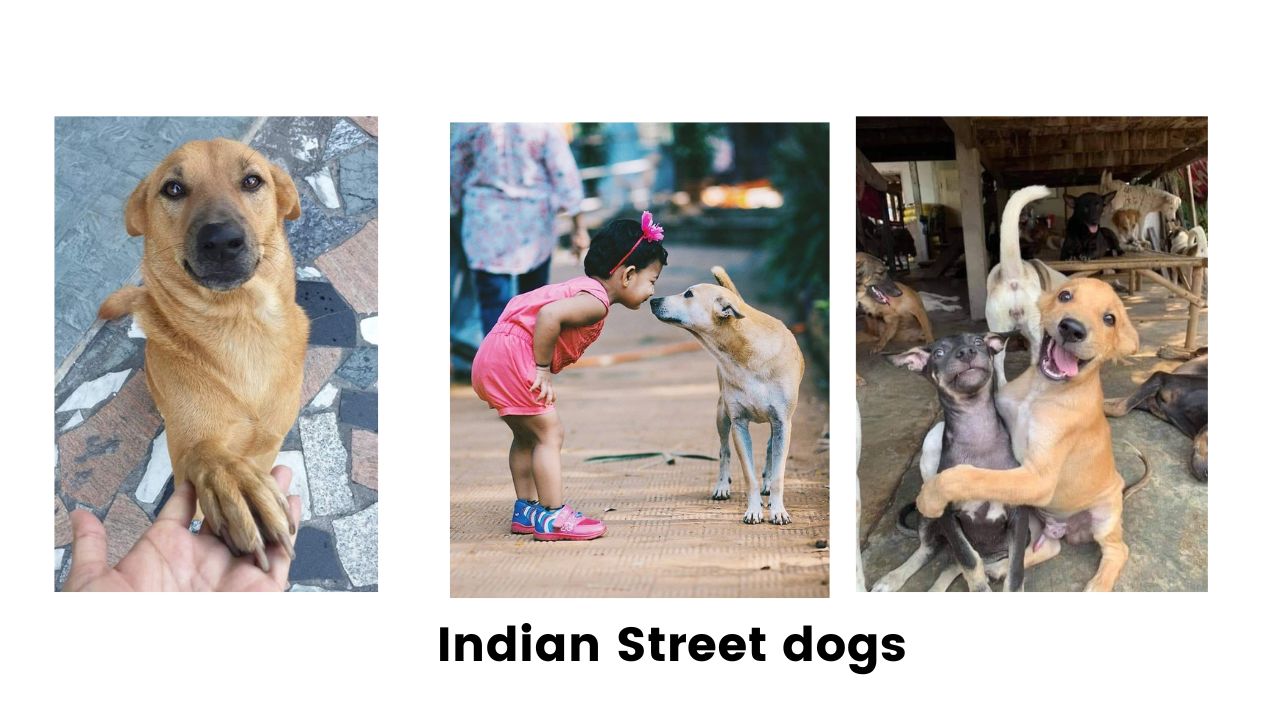Indian street dogs, often referred to as desi dogs, are a common sight across the streets and alleys of India. These dogs are not just strays; they are a vital part of the urban ecosystem. With their keen instincts and adaptability, they thrive in various environments, from bustling cities to quiet villages. Street dogs in India exhibit a range of colors, sizes, and temperaments. They are known for their friendly demeanor and remarkable survival skills. Many people have shared heartwarming stories about how these dogs have formed bonds with humans, acting as guardians or companions in their neighborhoods.
List of Dog Breeds Found in India
India is home to several dog breeds, each with its unique characteristics. Here’s a brief introduction to some of the most notable breeds:
- Rajapalayam: Originating from Tamil Nadu, this breed is known for its striking white coat and loyalty. They were traditionally used for guarding estates.
- Mudhol Hound: This breed hails from Karnataka and is recognized for its speed and agility. Mudhol Hounds are excellent hunters and make great companions.
- Kanni: Another breed from Tamil Nadu, Kanni dogs are known for their grace and elegance. They are often used for hunting small game.
- Chippiparai: This breed is also from Tamil Nadu and is known for its hunting abilities. Chippiparais are loyal and protective of their families.
- Banjara Hound: Banjara Hounds are known for their endurance and ability to navigate difficult terrains. They are often associated with nomadic tribes.
- Indian Pariah Dog: Considered the ancestor of all Indian dog breeds, these dogs are highly adaptable and intelligent. They have a strong survival instinct.
- Gaddi Kutta: This breed is primarily found in the Himalayan region and is used for herding sheep. Gaddi Kuttas are known for their strength and protective nature.
Genetic Background of Indian Street Dogs
The lineage of Indian street dogs can be traced back thousands of years to ancient domesticated dogs that roamed the Indian subcontinent. These canines have evolved over time, adapting to various climates and environments across India. Genetic studies suggest that Indian street dogs share a common ancestry with several ancient breeds. Their physical traits often include a lean body, erect ears, and a short coat that helps them withstand the heat. Behaviorally, they tend to be independent yet social animals, showcasing traits that differentiate them from purebred dogs.
Behavioral Studies of All Breeds of Indian Street Dogs
Research on the behavior of Indian street dogs reveals fascinating insights into their social structures and adaptability in urban environments.
- Social Structures: Street dogs often form packs that help them navigate city life more effectively. These packs establish hierarchies that dictate social interactions.
- Mating Strategies: Studies show that street dogs exhibit unique mating behaviors influenced by environmental factors. Their mating strategies often involve competition among males to attract females.
- Survival Tactics: Street dogs have developed impressive survival tactics, such as scavenging for food and finding shelter in urban settings. Their intelligence allows them to adapt quickly to changing circumstances.
These studies highlight the resilience of street dogs as they navigate the complexities of city life while maintaining their social bonds.
What is an Indian Street Dog Breed?
An Indian street dog is not a single breed but rather a term used to describe various mixed-breed canines found throughout India. These dogs typically possess traits that make them well-suited for life on the streets, such as adaptability, intelligence, and strong survival instincts.While they may not conform to specific breed standards like purebreds, Indian street dogs have unique characteristics that endear them to many people. Their diverse genetic backgrounds contribute to their varied appearances and temperaments.
Questions Mostly Asked About Street Dogs
- Are street dogs dangerous?
- Generally, street dogs are not aggressive unless provoked. Many are friendly and can be approached with caution.
- Can I adopt a street dog?
- Yes! Adopting a street dog can be a rewarding experience as they often show immense gratitude towards their new families.
- How do I care for a street dog?
- Providing food, water, shelter, and regular veterinary care is crucial for caring for a street dog.
- Do street dogs need vaccinations?
- Yes! Vaccinations are essential to protect them from diseases common in canine populations.
- How can I help street dogs in my area?
- You can help by providing food, supporting local shelters, or participating in spay/neuter programs.
- What should I do if I find an injured street dog?
- Contact local animal rescue organizations or veterinarians who can provide medical assistance.
- Are there any laws protecting street dogs in India?
- Yes! Various animal welfare laws exist in India aimed at protecting stray animals from cruelty.
Common Health Problems Faced by Indian Street Dogs
Like all animals, Indian street dogs face several health challenges due to their living conditions:
- Infectious Diseases: Common diseases include rabies, parvovirus, and distemper due to lack of vaccinations.
- Parasites: Street dogs often suffer from fleas, ticks, and worms which can lead to further health complications.
- Malnutrition: Many street dogs do not receive adequate nutrition leading to various health issues such as skin problems and weakened immune systems.
Addressing these health problems requires community efforts focused on vaccination drives and feeding programs aimed at improving the overall well-being of these animals.
Legal Framework and Animal Rights for Indian Street Dogs
In India, several laws aim to protect animal rights:
- The Prevention of Cruelty to Animals Act (1960): This law prohibits cruelty towards animals including stray dogs.
- Animal Birth Control (ABC) Program: This initiative aims at controlling the stray dog population through sterilization programs while ensuring humane treatment.
Despite these laws, enforcement remains inconsistent across different regions. Advocacy groups continue working towards better protection for street dogs through awareness campaigns and community involvement.
Conclusion
As we wrap up our exploration into the world of Indian street dogs, it’s clear that these remarkable animals deserve our love and respect. Their resilience against adversity showcases their strength while reminding us of our responsibility towards them as members of our communities. Whether you choose to adopt one or support local initiatives aimed at helping them thrive in urban settings, every action counts towards improving their lives. Let’s continue celebrating our furry friends by advocating for their rights and welfare while cherishing the joy they bring into our lives! If you’re inspired by what you’ve read today about Indian street dogs or want to learn more about how you can help them in your community, consider signing up for our newsletter or exploring related articles on animal welfare initiatives! Together we can make a difference!







